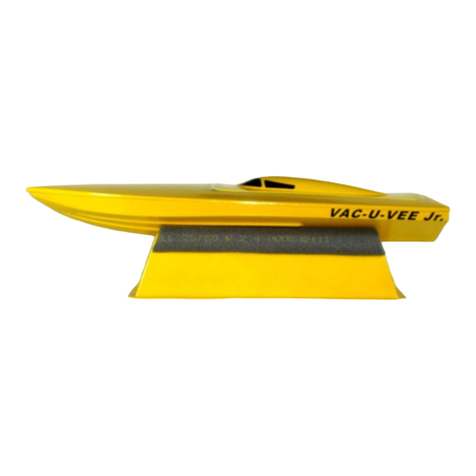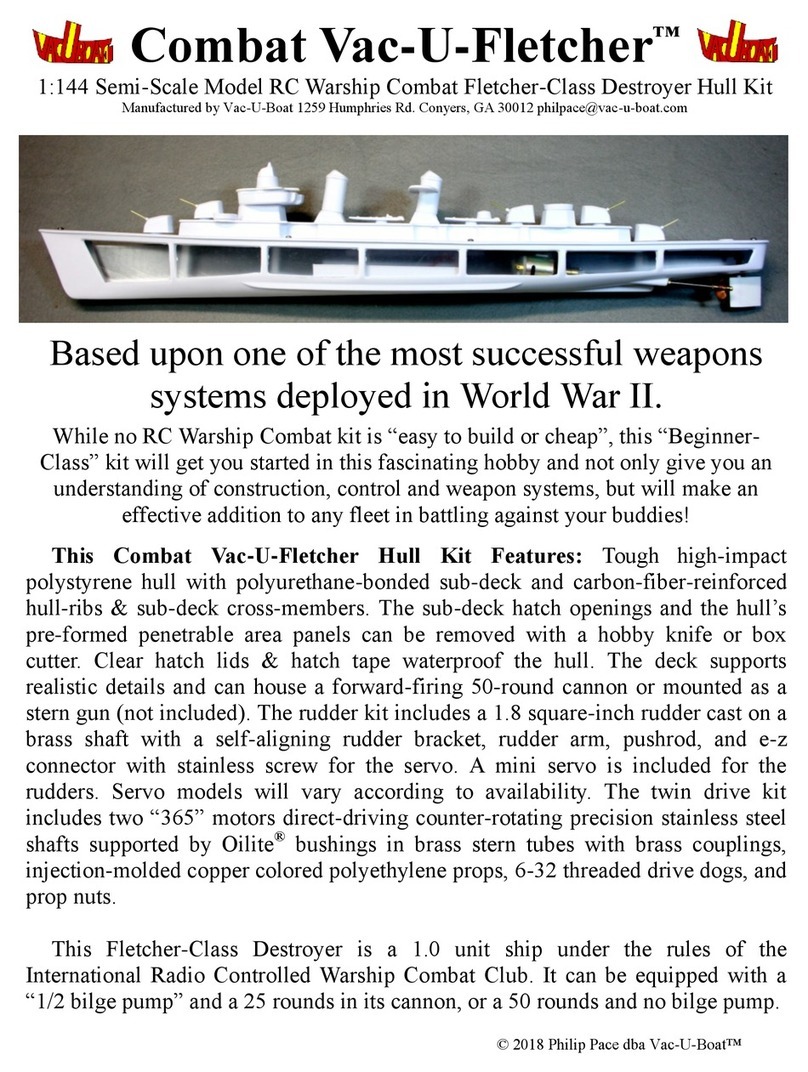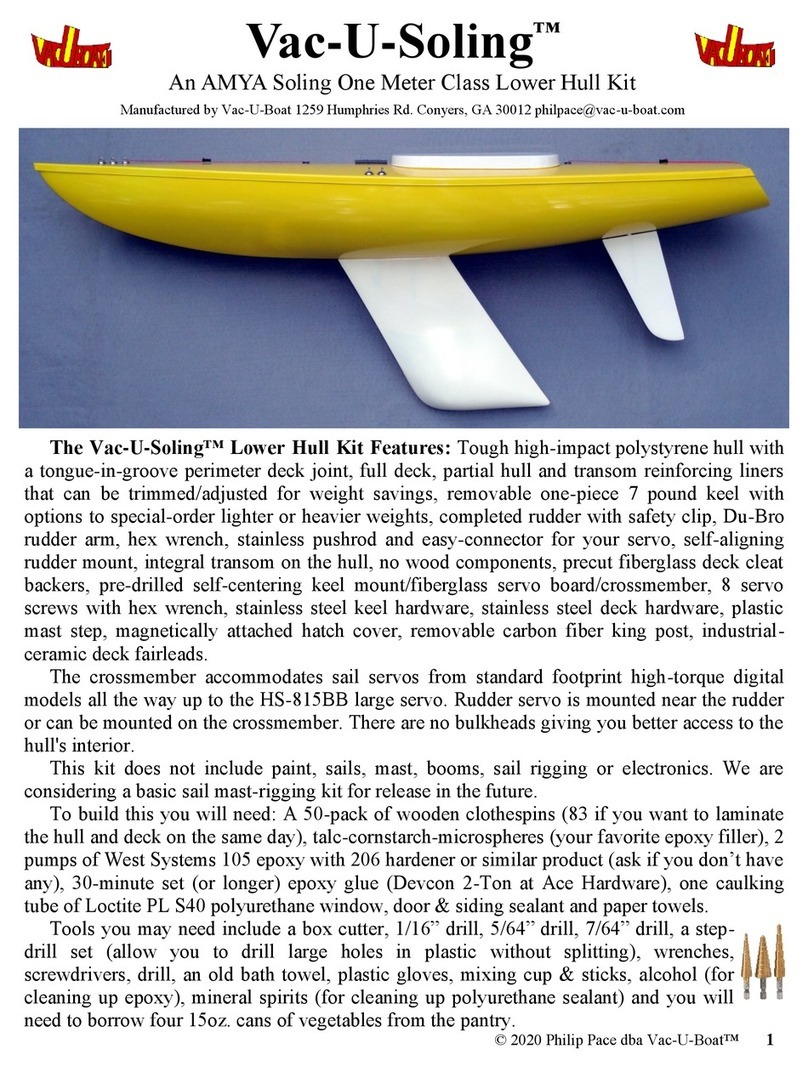
Now, for the Warnings!
Read all of the instructions! Review and understand each step, and the one after, as you build
your boat. Don’t rush. Good work takes time.
This is not a toy! I know. It LOOKS like a toy, but it isn’t. Toys are generally safe for small
children. This boat is not safe for small children. Assembling it requires the use of sharp tools
that can cut skin, strong adhesives than can bond flesh and injure eyes, spray paints that can be
flammable and toxic, as well as batteries that can short causing severe burns or fires. Read all
of the instructions and warnings on all of the tools and chemicals you plan to use. Use
protective eyewear when recommended. USE SAFETY GLASSES! If you think you don’t
have the skills, or are uncomfortable with tools and chemicals, or just changed your
mind, then pack up this kit and return it immediately for a full refund. If you bought this
direct from Vac-U-Boat, I’ll reimburse you for standard return shipping. If you need some
help, find a local boat club to join, check with the hobby shop where you purchased your
motor and radio gear, or contact internet clubs and organizations for assistance. Keep
your work area away from children. Even if you have no children, when not working on the
kit, keep all sharp objects and all chemicals locked away in a safe area. You never know who
will come to visit and how well they will supervise the young ones with them.
This is STILL not a toy! Once you complete the boat and are running it in a lake, know that
the boat can injure life, limb, and property. Never touch the propeller, spinning or not, while
there is a battery inside or connected to the boat. Even if it is turned OFF, assume it can glitch
and run on its own. Never run the boat if swimmers are in the water. Don’t chase wildlife. Be
careful with rechargeable batteries. They have the ability to dump large amounts of current in a
very brief period of time if shorted, causing burns or fires. Never store the boat with the battery
inside it, connected or not. Keep your batteries in a safe place, out of the reach of children.
Read the warnings on the other parts you purchase, the motor, battery, electronic speed control,
radio transmitter and receiver, and the battery charger. Use “frequency boards” at your lake to
control radio channel usage. If you don’t control channels, then you increase the risk of loosing
control of the boat. An out of control boat can harm someone. You are responsible for the safe
use of this product. You are responsible for choosing wisely, those who you entrust the use of
the boat and radio, even for a few minutes at a lake. Never swim after a disabled model boat!
This is an adult toy! That is what you say to those nice stranger-type kids that come up to you at the
lake. It isn’t easy, but it is the responsible thing to do. Clubs should keep slower scale boats for
visitors to run. I happen to know a guy who makes a nice easy-to-build plastic tugboat kit that is just
fine for such an occasion. Lets see, what was the name of that boat?....
CHOKING HAZARD - Small parts. Not for children under 3 years.
WARNING - To avoid danger of suffocation, keep plastic bags away from babies and children. Do not use
in cribs, beds, carriages or play pens. THESE PLASTIC BAGS ARE NOT TOYS.
WARNING: Brass parts in this kit contain lead, a chemical known to the State of California to cause
cancer and birth defects and other reproductive harm. Bronze and brass alloys can contain lead.
WARNING:

































